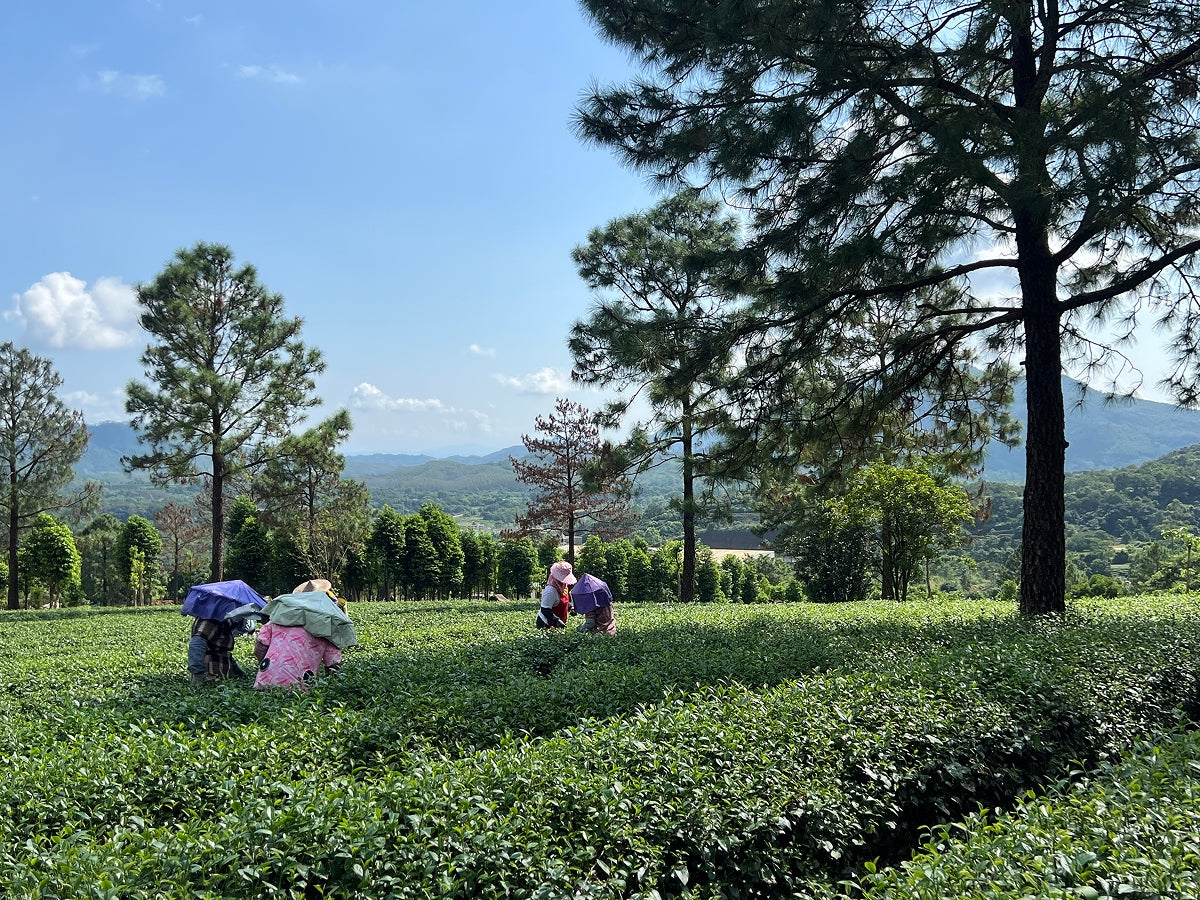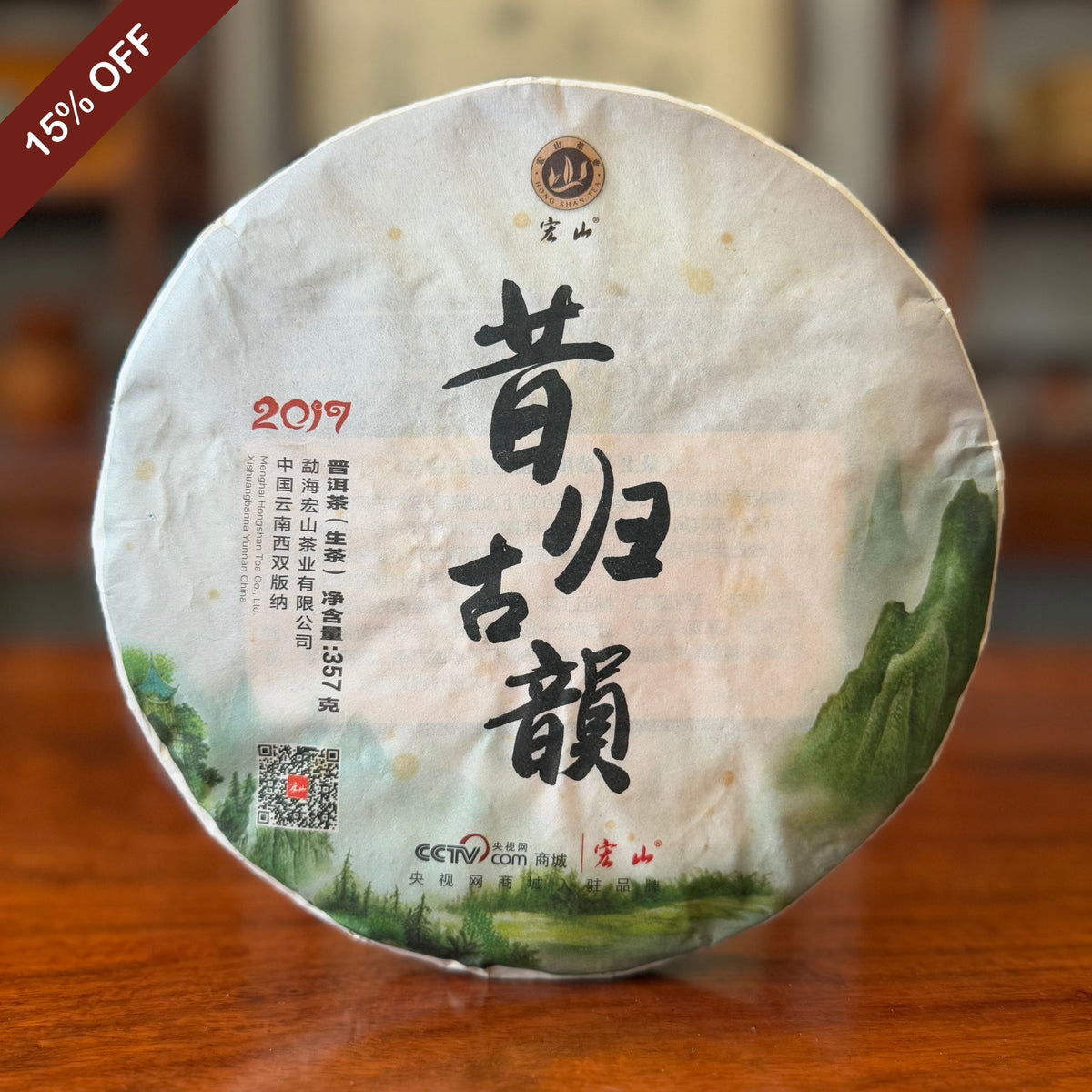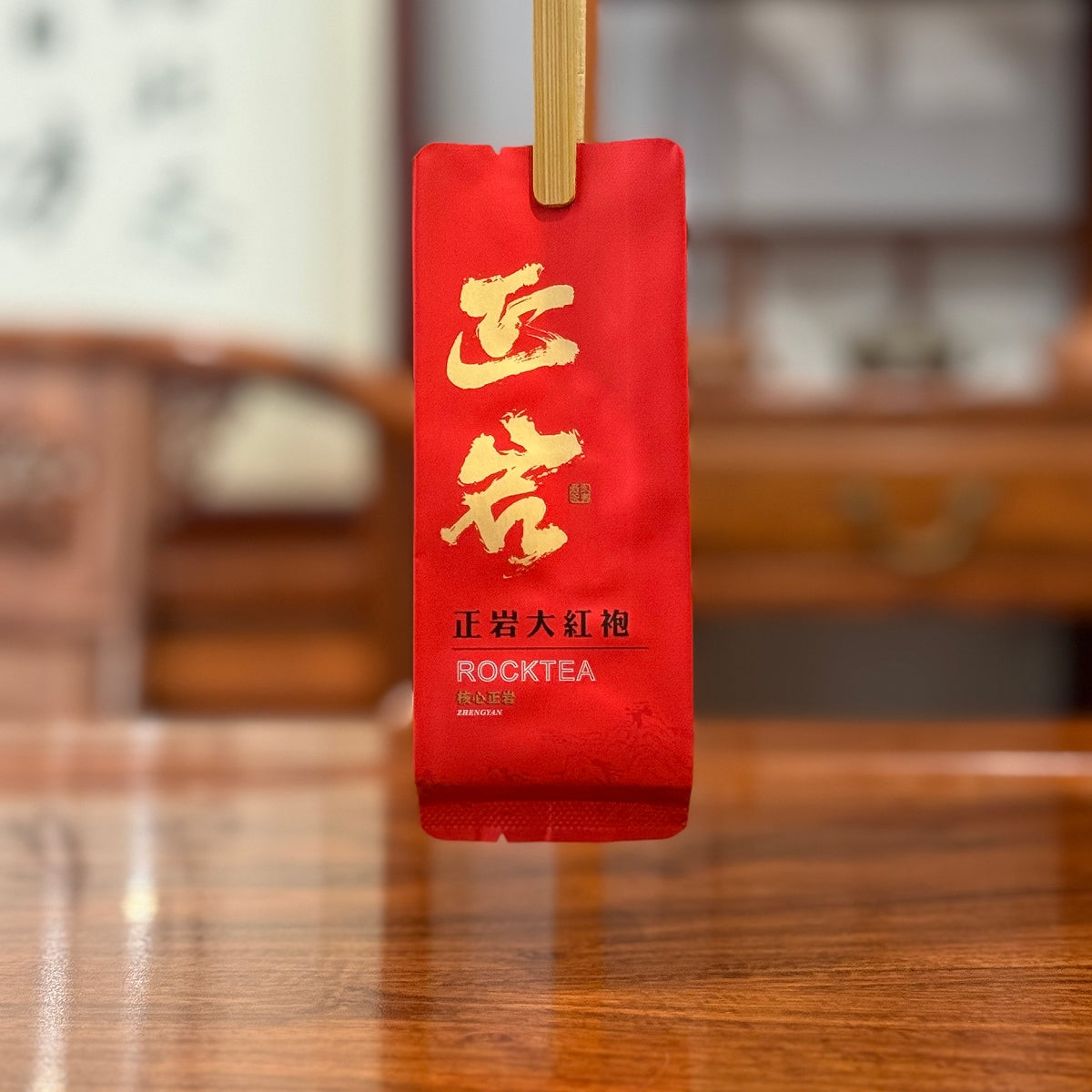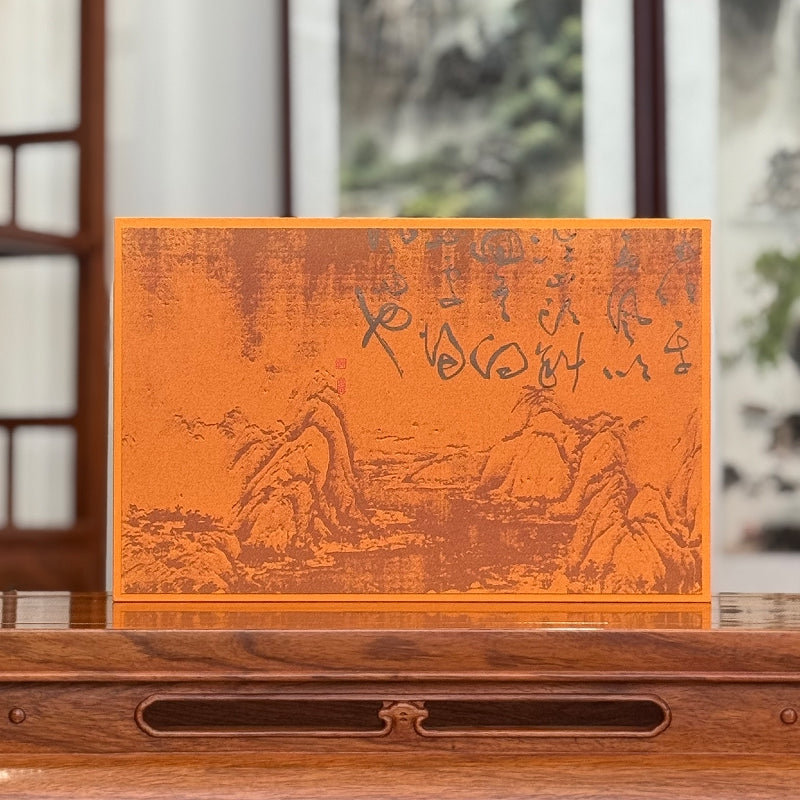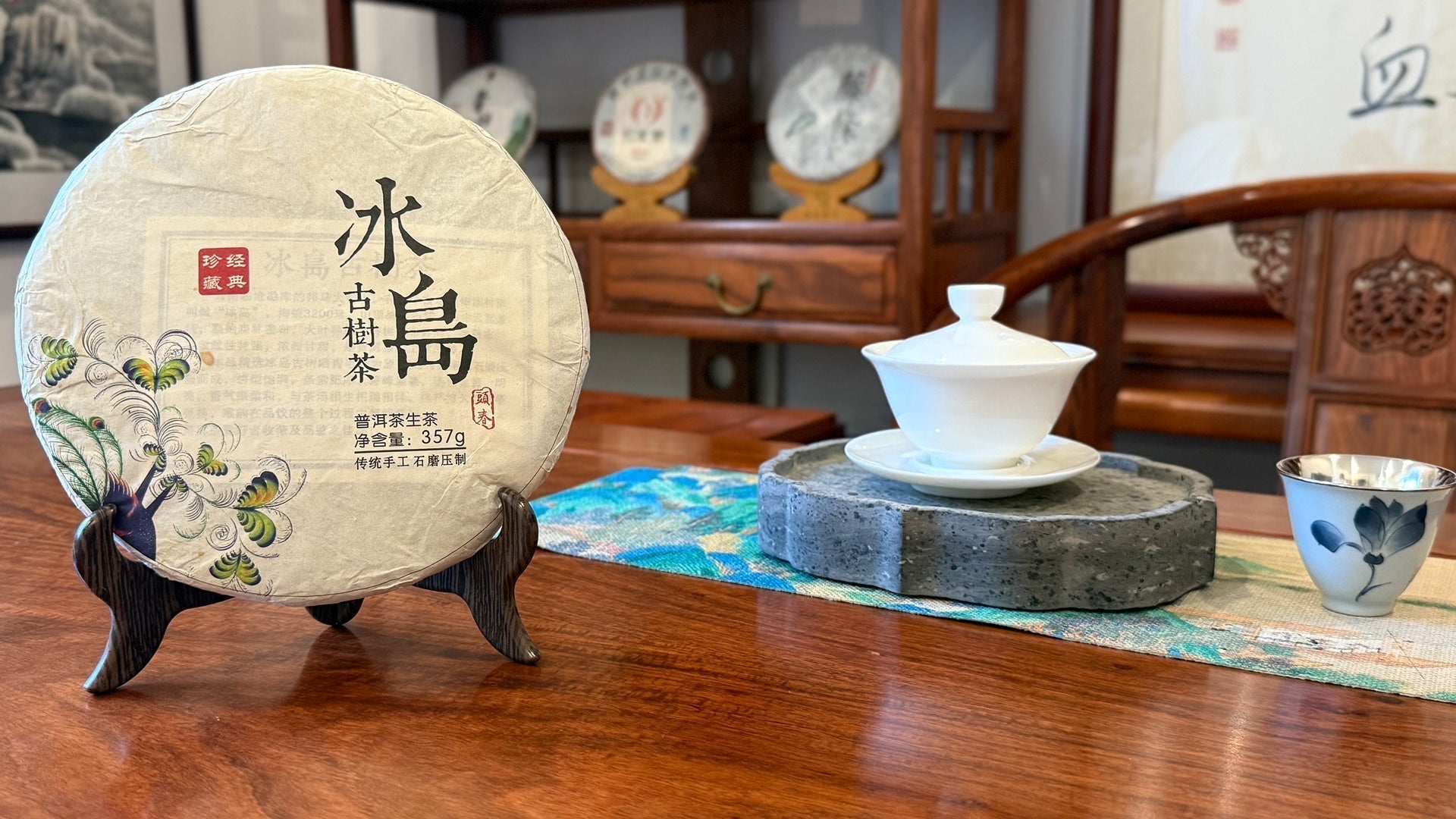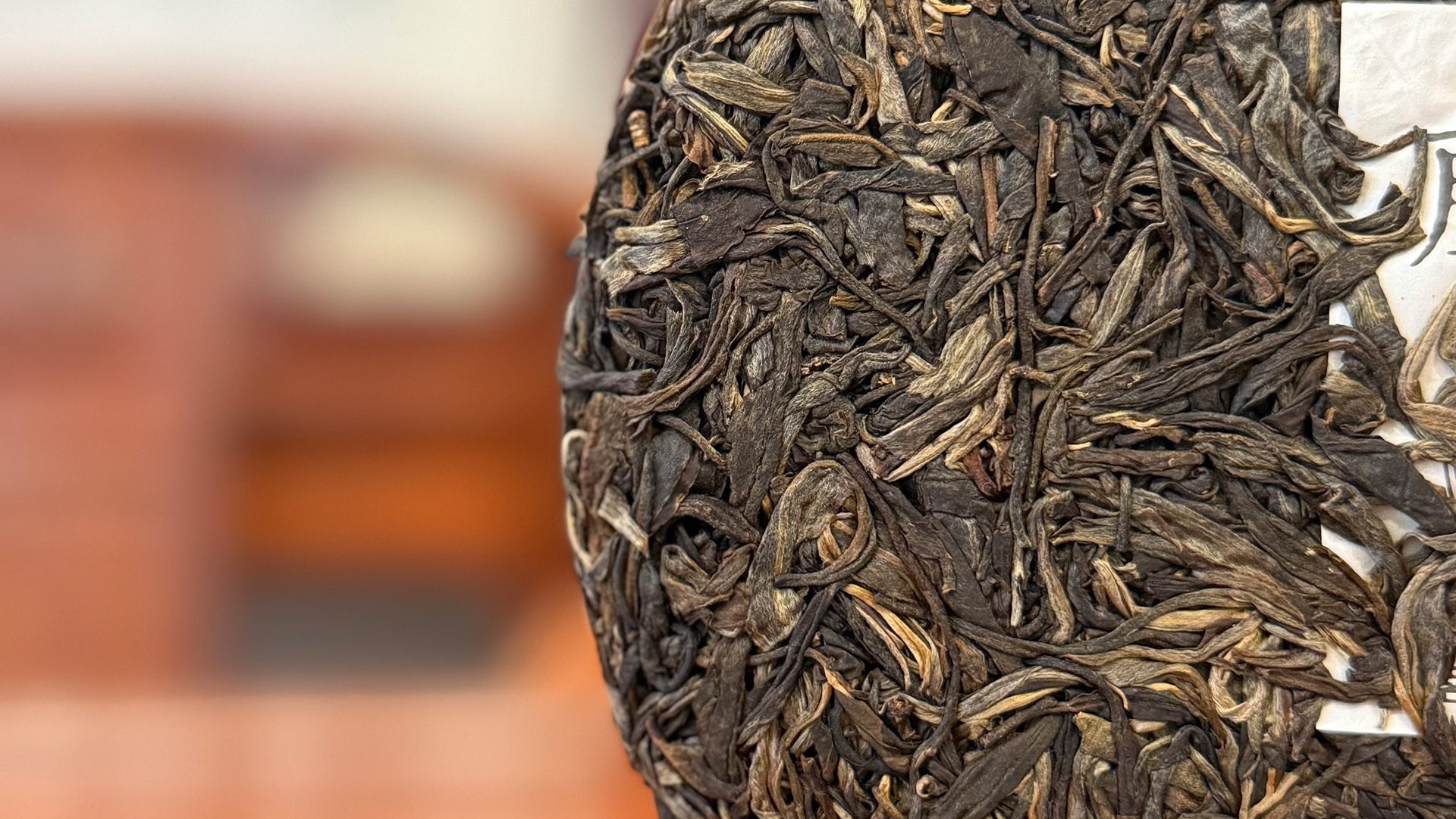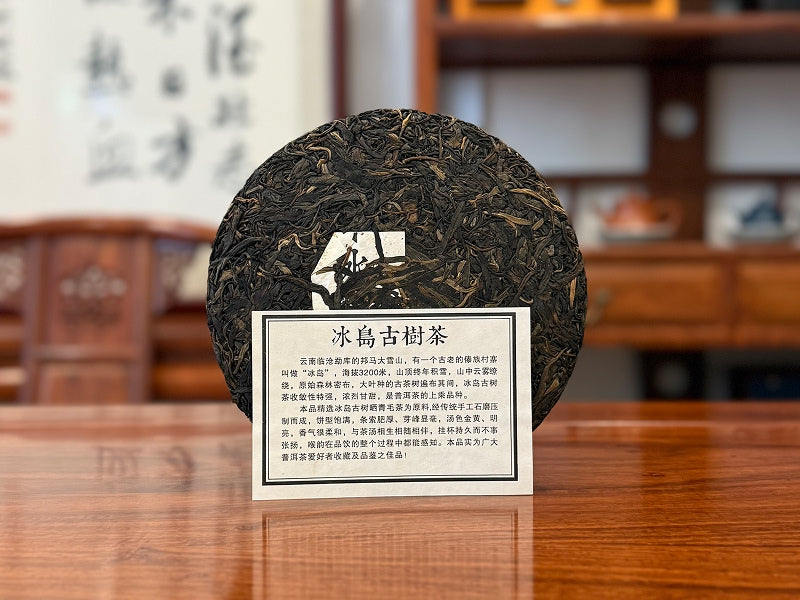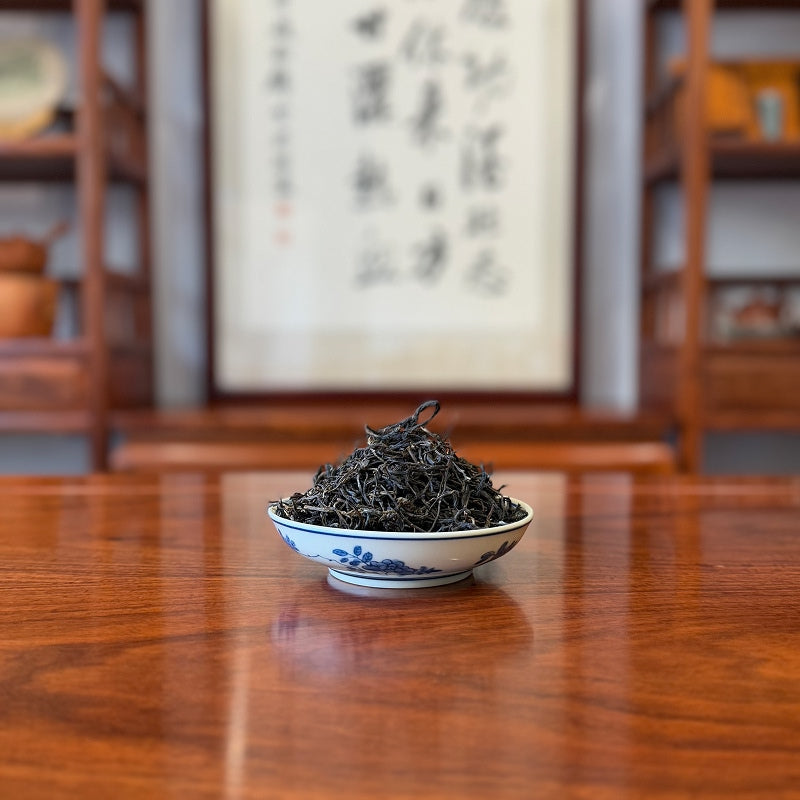Mi Lan Xiang (auch als Honigorchidee bekannt) ist die charakteristische Sorte des Phoenix Dancong Oolong-Tees und eine der wertvollsten unter seinen zehn klassischen Aromaarten.
Als renommierte chinesische Oolong-Tees ist Phoenix Dancong tief in der Tradition verwurzelt, und Mi Lan Xiang geht auf die Mutterbaumlinie der lokalen Shuixian-Sorte zurück. Er wurde sorgfältig durch natürliche Hybridisierung und strenge Selektion aus herausragenden einzelnen Teesträuchern kultiviert.
Ursprünge und Kultivierung: Das 600-jährige Erbe von Mi Lan Xiang

Der Mutterbaum ist über 600 Jahre alt und wächst in einer der vier wichtigsten Oolong-Anbauregionen Chinas – dem Fenghuang Shan (Phoenix-Berg) in Chaozhou. Aus diesem Grund wird der Tee international häufig als Phoenix Dancong Oolong Tea oder einfach „Phoenix Oolong Tea“ bezeichnet, während er im Inland häufiger „Fenghuang Dancong“ genannt wird.
Im Laufe der Jahre hat die Chinese Tea Group durch die enge Zusammenarbeit mit lokalen Teebauern oft von erfahrenen Teemeistern gehört, dass Mi Lan Xiang bereits Ende der 1970er- und Anfang der 1980er-Jahre weit verbreitet im Phoenix Mountain angepflanzt wurde – vom Fuße des Gebirges bis zu den Gipfeln und in verschiedenen Höhenlagen. Heute sind die meisten dieser Teebäume 40 bis 50 Jahre alt, und ihr Alter trägt wesentlich zur Beliebtheit von Mi Lan Xiang auf dem chinesischen Teemarkt bei.

Der Anbau ist weit verbreitet und reicht von preiswerten Teesorten aus niedrigen Höhenlagen, die sich ideal für den täglichen Genuss eignen, bis hin zu Premium-Hochgebirgssorten mit reichhaltigen, vielschichtigen Aromen, die bei ernsthaften Teeliebhabern des Fenghuang Dancong Oolong-Tees sehr begehrt sind.
Wir laden Sie ein, unsere Fenghuang Dan Cong Oolong-Teekollektion zu erkunden. Dort finden Sie ausführliche Informationen zu verschiedenen Sorten, Tipps zum Aufbrühen und hochwertige Auswahlmöglichkeiten zu authentischen Ursprungspreisen – perfekt für jeden Teeliebhaber.
Warum die erste Frühlingsernte die Qualität von Dancong bestimmt

Jedes Jahr im Frühling, wenn sich die Erde erwärmt und der Phoenix Mountain üppig grün wird, ist Mi Lan Xiang einer der ersten Dancong-Oolongs, die geerntet werden – und markiert damit den offiziellen Beginn der Frühlingsteesaison. Da er früh auf den Markt kommt, gilt er oft als Symbol für Glück, bekannt als die „erste Blüte“ der Dancong-Ernte und als vielversprechender Start in ein neues Jahr mit edlem Tee.

Im Frühling geernteter Mi Lan Xiang gilt als der hochwertigste Tee. Aufgrund der traditionellen Hochtemperatur- und Langzeitröstung, die für diese Dancong-Sorte verwendet wird, empfiehlt es sich jedoch, ihn nicht unmittelbar nach der Produktion zu konsumieren. Stattdessen empfiehlt es sich, ihn einige Monate ruhen zu lassen – bekannt als „Zurückziehen des Feuers“. Dabei mildert sich der Röstcharakter des Tees mit der Zeit, wodurch sich das Aroma stabilisiert und der Geschmack ausgewogener wird.
Etwa fünf Monate später, pünktlich zum Mittherbstfest, erreicht der Tee sein ideales Trinkfenster. Von da an reift Mi Lan Xiang mit der Zeit weiter und wird weicher und komplexer.
Tee als Medizin: TCM-Prinzipien hinter Mi Lan Xiang
Wir haben einen Freund, der traditionelle chinesische Medizin (TCM) praktiziert und aus der Region Chaoshan stammt. Seine Familie praktiziert seit sieben Generationen Medizin. Er trinkt sehr gern Mi Lan Xiang und verwendet es gelegentlich sogar als unterstützenden Tee in Kräuterrezepten.

Als wir einmal zusammen Tee tranken, fragte ich ihn nach den medizinischen Vorteilen von Mi Lan Xiang in der TCM. Er erklärte, dass gealterter Mi Lan Xiang – bekannt als „Vintage-Tee“ – zur Behandlung von Halsentzündungen eingesetzt werden kann, da er Husten lindert, Schleim löst und Hitze und Giftstoffe ausleitet.
Bei Blähungen und Bauchbeschwerden unterstützt es außerdem die Verdauung und lindert Beschwerden. Dies liegt an den natürlichen aromatischen Verbindungen in Mi Lan Xiang, die die Sekretion von Verdauungsenzymen anregen und zur Verbesserung der Milz- und Magenfunktion beitragen.

Nach seinen Ausführungen mussten wir uns daran erinnern, dass Tee vor Tausenden von Jahren erstmals als Medizin entdeckt und verwendet wurde. Die traditionellen medizinischen Eigenschaften von Mi Lan Xiang scheinen diesen alten Ursprung des Tees als „Medizin im Getränk“ widerzuspiegeln.
Möchten Sie lernen, wie man diesen wertvollen Mi Lan Xiang Dancong Oolong mit der traditionellen Gongfu-Teemethode aufbrüht?
Schauen Sie sich unsere ausführliche Zubereitungsanleitung an – Mi Lan Xiang (Honig-Orchidee) Dancong Oolong-Tee – Gongfu-Zubereitungsanleitung –, um sein einzigartiges Blumenaroma und seine komplexen Schichten freizusetzen.
